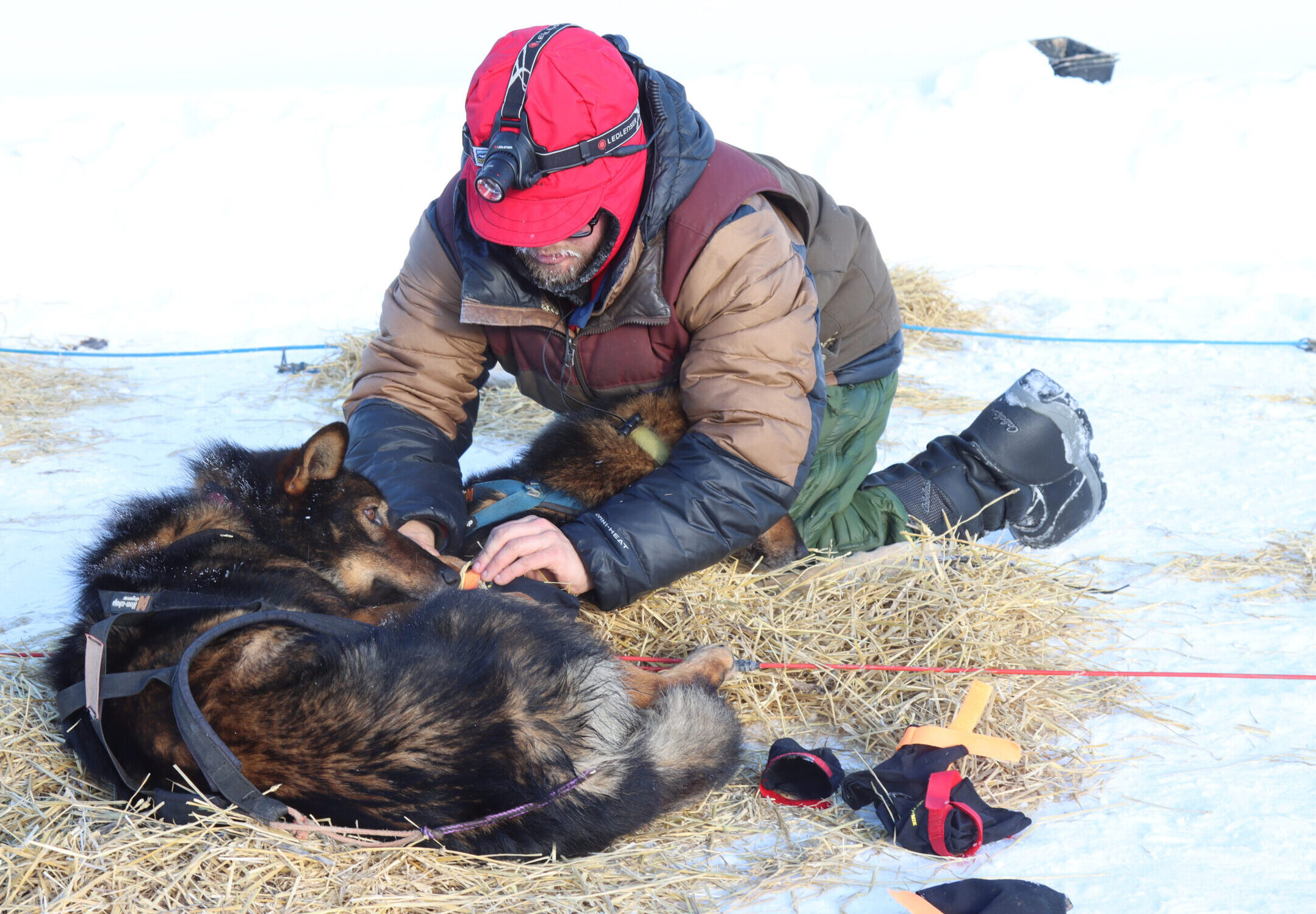
RUBY — Iditarod mushers arriving here Friday were taking stock of their sled dog teams, some of which were parked and resting in the sun, before heading out onto the wide and flat Yukon River.
This is where the race part of the Iditarod Trail Sled Dog Race really starts to shape up. All but one team — that of Nicolas Petit, who arrived Thursday night — has completed their mandatory 24-hour rest. Positioning matters now, for sure. But from here, with about another 500 miles to go in the 1,000-mile race, maintaining the strength and speed of the teams is crucial to a good finish, or finishing at all, the mushers said.
Pete Kaiser, the 2019 Iditarod champion, pulled into this town on the bluffs overlooking the Yukon a little after 10 a.m. Friday. As the sun came up over a hill, shining welcome, warm rays down on the dogs, Kaiser fed his team the usual blend of meat, kibble and hot water.
The Bethel musher said he was looking forward to the Yukon — his team has a lot of experience on the Kuskokwim River back home — but he had added more rest to their schedule to keep the dogs strong for what’s to come.
“It’s kind of put us behind a few hours, but just trying to make sure they’re rested and able to race hard at the end if we get a chance,” Kaiser said. “I’d rather be a little closer to the front if things work perfectly, but they usually don’t. But we’re still in the front and in the mix.”

The mushers are hearing about colder temperatures and wind in the forecast, which could derail a tired team in the wide open expanses of the Yukon River and, later, on the Bering Sea coast.
Kaiser, sitting in 7th place midday Friday, mentioned the team of Travis Beals, running in 1st at the time.
“Travis is having a great race, looks like and is kind of fairly dominant at the moment, not to say he can’t get caught and get beat, but he’s definitely in the driver’s seat,” Kaiser said. “I mean, I think in my position, being several hours behind him, I don’t think I’m going to catch him on just like speed. So we’ll see.”
“We’re only halfway in the race, and tons can happen,” he added.
Second-year Iditarod musher Hunter Keefe of Knik was right behind Kaiser in 8th place and happy about his position and his dogs.
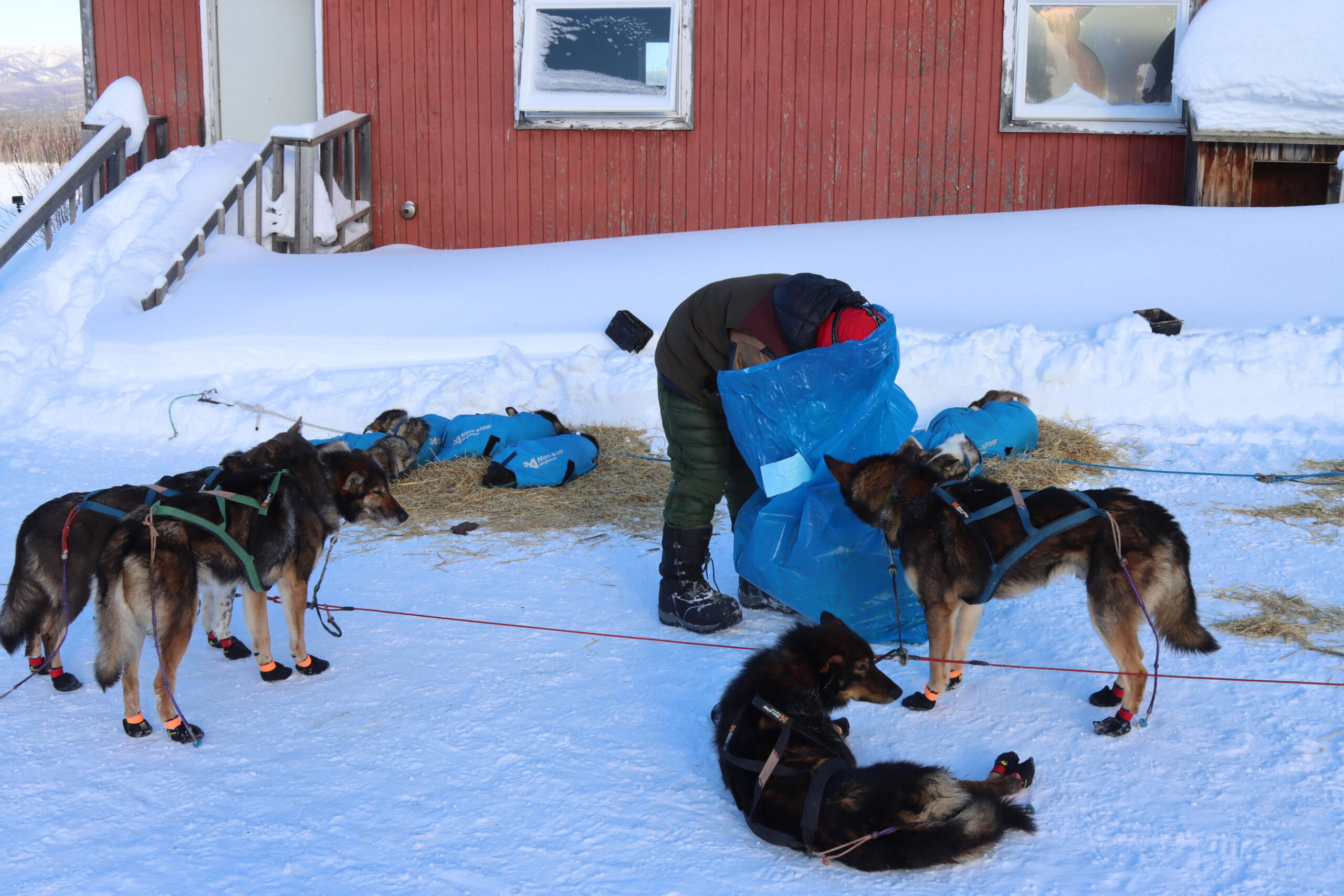
In the dog yard a little before 11 a.m. Friday, while local school kids looked at the canine athletes, Keefe said he thought his team might be able to run a little faster after a nice long rest in the sun.
“But I’ve never had a team this fat and eating this well, so that’s really cool and I’m really happy about that, and when you’ve got an appetite like that you can do a little bit more,” he said. “We just want a little speed back.”
An 18-hour playlist featuring a wide variety of songs, put together by Beals’ partner Sarah Stokey, was also making Keefe happy, he said while pouring water from a bucket into his cooker.
“I like songs that talk about liking where you’re being at or liking what you’re doing,” he said. “I like love songs, and then they kind of correlate more with the team, like loving the team at the moment. All different kinds of stuff can be tied into mushing if you get creative, and you have plenty of time to get creative out there.”
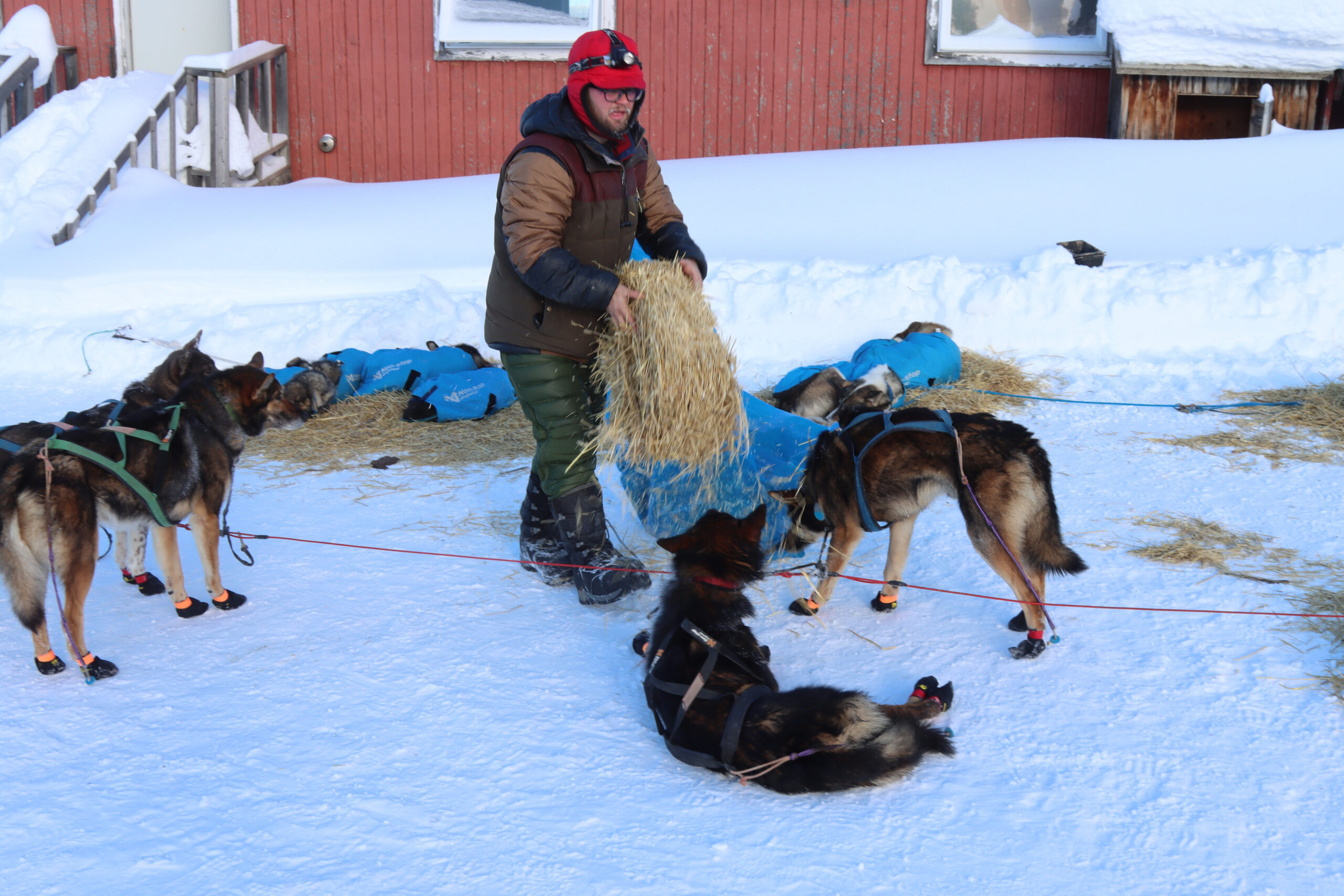
Five-time champion Dallas Seavey of Talkeetna pulled in about a half-hour behind Keefe in 9th place after coming off his 24-hour layover at the previous checkpoint, Cripple.
Among the many obstacles in the race, Seavey is trying to overcome a two-hour penalty that race officials added to his 24 for failing to adequately gut a moose he had shot early Monday, as it was attacking his team.
Seavey was parked on a hill above the river Friday, often jogging from one end of his string of dogs to the other while doing the usual dog chores: feeding snacks, removing booties, spreading out straw and mixing up meals to ladle out. That also included breaking up a brief fight between two dogs over a frozen piece of beef.
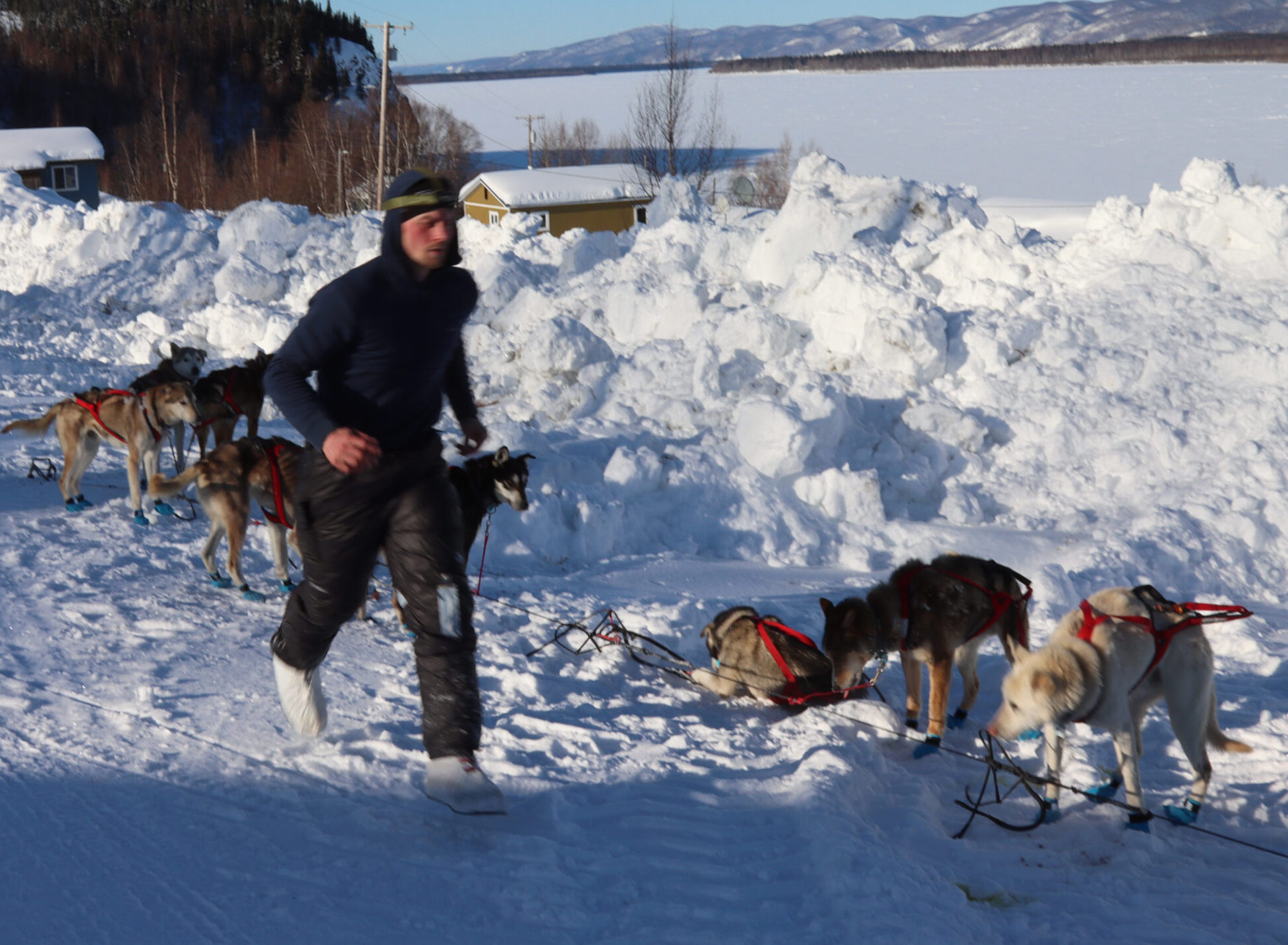
While rubbing foot ointment into the dogs’ paws, Seavey said he had seen subtle signs of lingering soreness in them, even coming off the long break in Cripple, that made him want to “rebuild” before trying to race other teams.
Mushing the dogs all the way to Cripple before the 24-hour break might’ve been too far, he said.
“Imagine you do a really tough day at the gym, you haven’t done leg day for a while, and you go in there and you really just crush it,” Seavey said. “It’s oftentimes not the day after, it’s two days after, that you really kind of feel that soreness.”
Seavey said he wasn’t seeing anything too problematic with the dogs, for example, none of their gaits looked off.
“But I feel like if we try to be at all aggressive with that underlying, then we will cause problems,” he said. “It’s not that there’s some big problem at the moment, it’s just I’ve done it long enough to know if you see that in a dog team, it’s really easy to convince yourself that they’ll warm up out of it and it’s not going to be a problem, but almost invariably if you go do something really challenging, it will be a problem.”
Back in the dog lot in 4th place, musher Jessie Holmes, who lives in the Brushkana Creek area, was in the midst of an eight-hour layover. Teams must take an eight-hour rest somewhere on the Yukon. He had wanted to do that farther down the trail in Galena, he said, but he opted to stay in Ruby, with the sun beating down and the opportunity to feed them more.
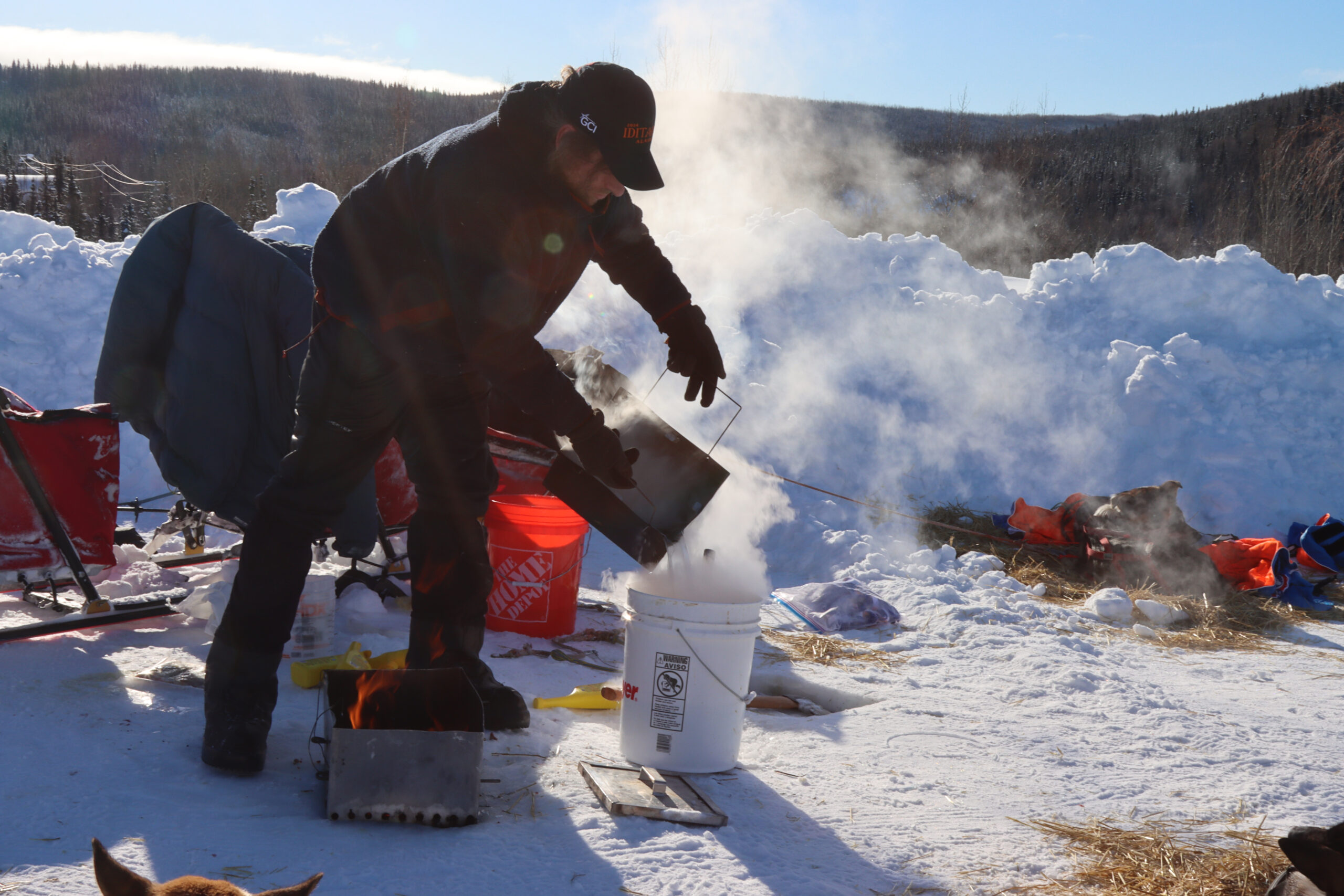
As Holmes cut open the tops of bottles of Heet, the pure isopropyl alcohol mushers use to fuel their cookers, he said he’d also heard reports of cold, windy weather to come.
“I think rest can’t do you wrong heading into the weather that we’re going to be heading into,” he said. “First and foremost, you want to have a strong dog team.”
Holmes said he was expecting the worst weather of any Iditarod he’s run: temperatures of 10 to 20 below and wind blowing 20 to 30 mph, which could obscure visibility with blowing snow and make for wind chills colder than 50 below.
Those challenges lie ahead, but Holmes still had some lingering pain from a challenge earlier on the trail. He had narrowly avoided the same moose Seavey shot outside of the Skwentna checkpoint. Holmes and his team had mushed past it first, but he said he had to punch it to get by.
“I didn’t like want to punch the moose in the nose, it was just a last ditch effort to not get stomped or to have any dogs get stomped,” Holmes said. “Dallas said, ‘I wished you had punched it harder.’”
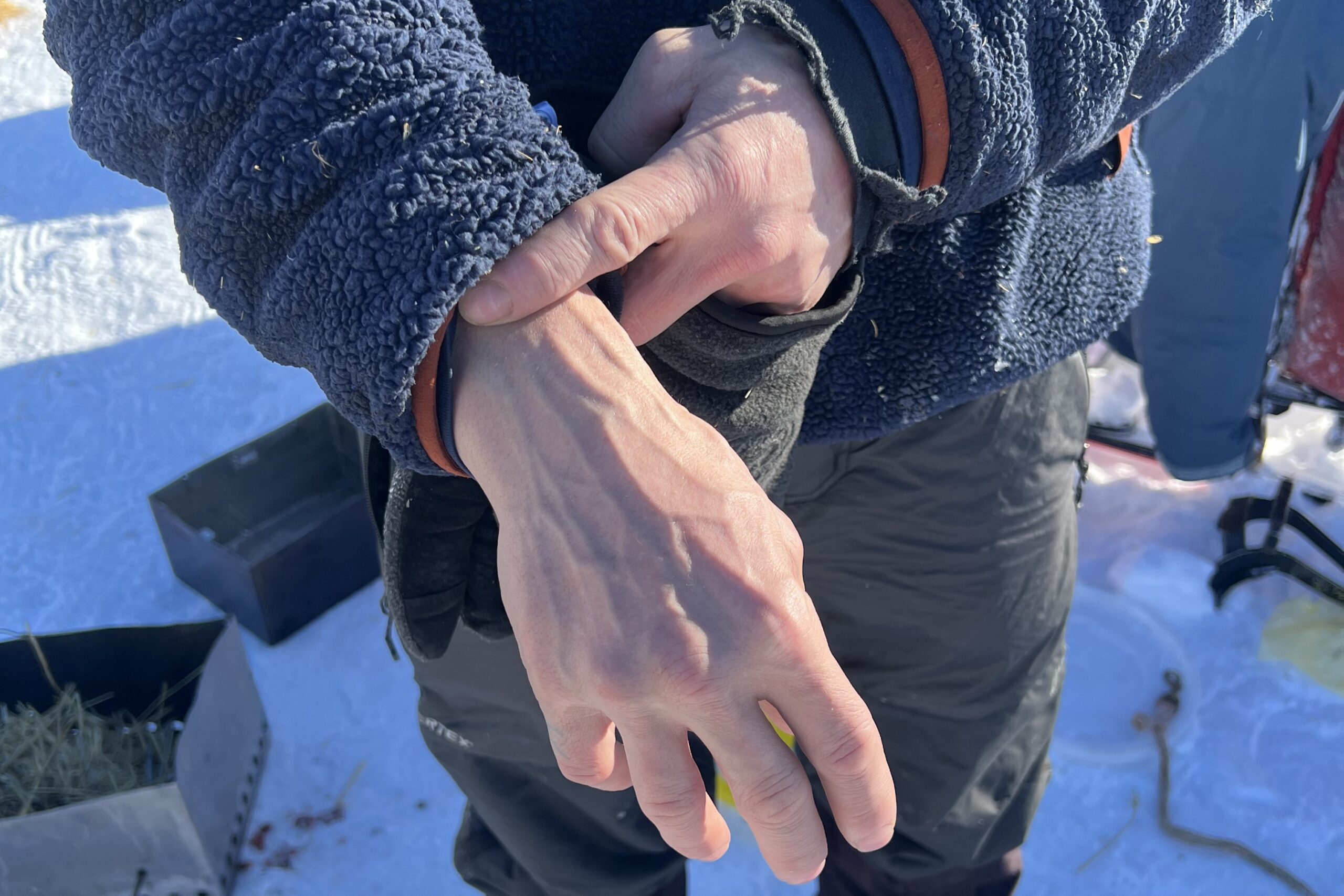
Holmes’ hand still hurt hundreds of miles later, in Ruby.
“I didn’t think about it, I just popped it as hard as I could, and it kind of stunned it,” he said. “I tell ya, my heart was racing for the next 30 minutes after that, and around every corner, there was going to be another moose. So it’ll be nice to be on the Yukon River where you can see what’s around each corner.”

Keep our Iditarod coverage thriving! Your support today helps fund journalism at Alaska Public Media. Click here to donate.
For more Iditarod coverage visit alaskapublic.org/Iditarod and click here to subscribe to our free Iditarod newsletter, sent daily during the race.
Casey Grove is host of Alaska News Nightly, a general assignment reporter and an editor at Alaska Public Media. Reach him at cgrove@alaskapublic.org. Read more about Casey here.
This post was originally published on this site be sure to check out more of their content.









